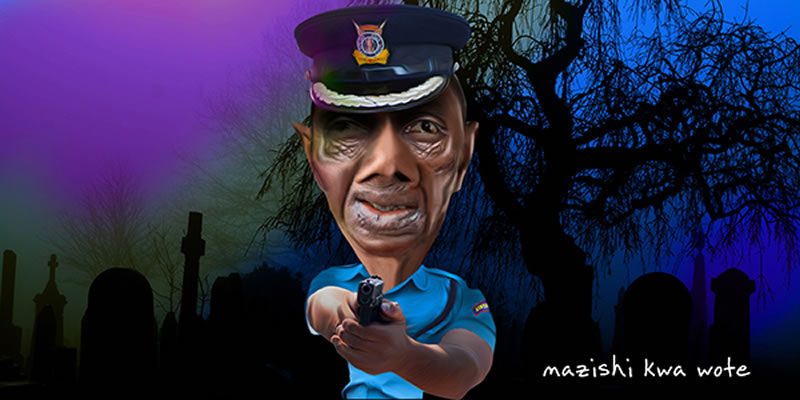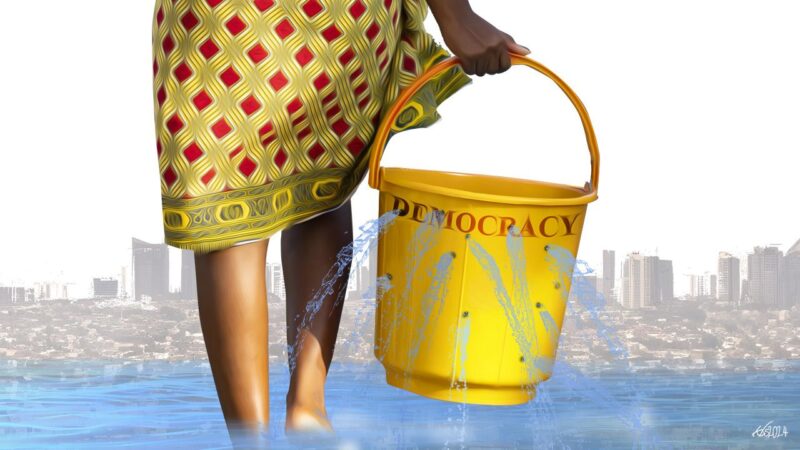A world without the police is inconceivable to many people. The police are viewed as part of modern society’s foundation, ensuring democracy and keeping people safe.
In practice, however, police around the world sometimes repress social movements, stifle democracy, and exacerbate social and racial injustice. Across the African continent, they often use force to prop up repressive regimes. And in Kenya in particular, extortion and extrajudicial killings by the police are rampant.
Kenya is unusual for its extensive attempts to reform the police. Reform efforts began in earnest in 2008, when the police were found to be complicit in post-election violence. And yet, after 15 years and billions of shillings spent, the police reform project has largely failed.
The Kenyan police remain repressive, unaccountable and effectively unreformable. Many citizens complain about how the police treat them like ATMs – a source of cash. During the COVID-19 pandemic, the police killed tens of Kenyans while enforcing curfew measures.
We’ve conducted hundreds of interviews, discussion groups and over a decade of ethnographic research into how counter-terrorist policing and securitisation have shaped Nairobi. And in turn, how local residents respond to police violence and build their own practices of care, mutual aid and security.
We have come to the conclusion that the police make most people feel less safe. Many residents told us they don’t depend on the police for their safety: they keep each other safe. Given the impasse of police reform – and citizen responses to this – there is a strong argument to be made for the abolition of the Kenyan police altogether.
Policing at an impasse
Modern police institutions made their first appearances on the African continent as part of colonisation and the expansion of European capitalist interests.
In Kenya, the roots of policing lie in early colonial “conquest”. The Imperial British East African Company developed security forces to protect its expanding economic interests in the 1890s, and the Kenya-Uganda Railroad developed its own police force in 1902.
After Kenya’s independence in 1963, the police were “Africanised” but retained much of their colonial character. Under Daniel arap Moi’s authoritarian regime (1978-2002), the police continued to play a key role in repressing dissent.
There have been calls to reform the Kenyan police for decades. But the 2007-08 post-election violence, in which police were complicit in widespread ethnic violence, accelerated attempts at reform.
Over the past 15 years, police reform has been enshrined in the 2010 constitution and actualised in numerous acts of parliament. It’s been supported internationally with funding and technical expertise from the UN, the US and the EU, among others. It prompted the reorganisation of the police service and the establishment of civil oversight mechanisms.
Yet, despite all of these efforts, the Kenyan police remain corrupt, violent and unaccountable.
Civilian oversight over the police has proved ineffectual. The Independent Policing Oversight Agency has managed to bring only 12 cases of police violence to conviction out of more than 20,000 complaints received between 2012 and 2021. That is only one out of every 1,667 complaints. The under-resourced agency simply can’t grapple with the immense volume of reported police abuses.
The case for abolition
Police reform has failed. Is it time to consider abolition?
Abolition is not about simply tearing things down, but rather asking what should exist in place of outdated and violent systems that no longer serve people. Abolition is a creative and constructive project with deep philosophical roots.
So why abolish the Kenya police?
- The police are functionally obsolete for most Kenyans. In many low-income neighbourhoods, our research shows that people avoid calling the police to respond to crises or crimes. For many, experience shows that the police can make matters worse.
- The police often exacerbate insecurity, violence and corruption. To provide for their own safety, residents increasingly organise themselves into networks of friends, family and neighbours for basic safety. For instance, women in Mathare, Nairobi, organise their own security practices, which include conflict resolution, de-escalation of violence and support for survivors.
- In more affluent neighbourhoods, residents increasingly rely on private companies to provide security in their compounds. Police are seen as one among many security services available for hire. In our research, the few positive experiences with the Kenyan police were reported (predominantly) by such affluent residents.
- The remaining function of the police is “enforcing order” and protecting the state against society. Officers uphold and protect a rarefied governing class and political elite against the population.
Police abolition, therefore, would mean dismantling ineffective and repressive institutions and replacing them with systems of actual safety, systems that enable society to thrive.
What should replace the police?
When confronted with the idea of “abolition” for the first time, many people often respond: “but who will keep us safe?”
In Nairobi, the answer is to be found in existing social practices. The problem is that there’s a lack of resources to support alternatives to punitive security. We call for defunding the police and investing these resources in such alternatives.
- Invest in communities.When we ask about local security problems, residents often answer that the lack of schools, food, land, quality housing, water, electricity, toilets, healthcare and safe places for kids to play are what cause “insecurity”. Reinvestment in community means funding such social infrastructure to allow people to thrive. This reduces crime and violence.
- Invest in alternative safety mechanisms.This means strengthening dispute-resolution mechanisms that help resolve conflicts without violence. The government needs to support existing social justice centres, networks and movements fighting for change.
When these forms of social reinvestment are pursued, the need for the police is greatly diminished.
![]() –
–
Wangui Kimari, Anthropologist, University of Cape Town and Zoltán Glück, Assistant Professor of Anthropology, American University
This article is republished from The Conversation under a Creative Commons license. Read the original article.








